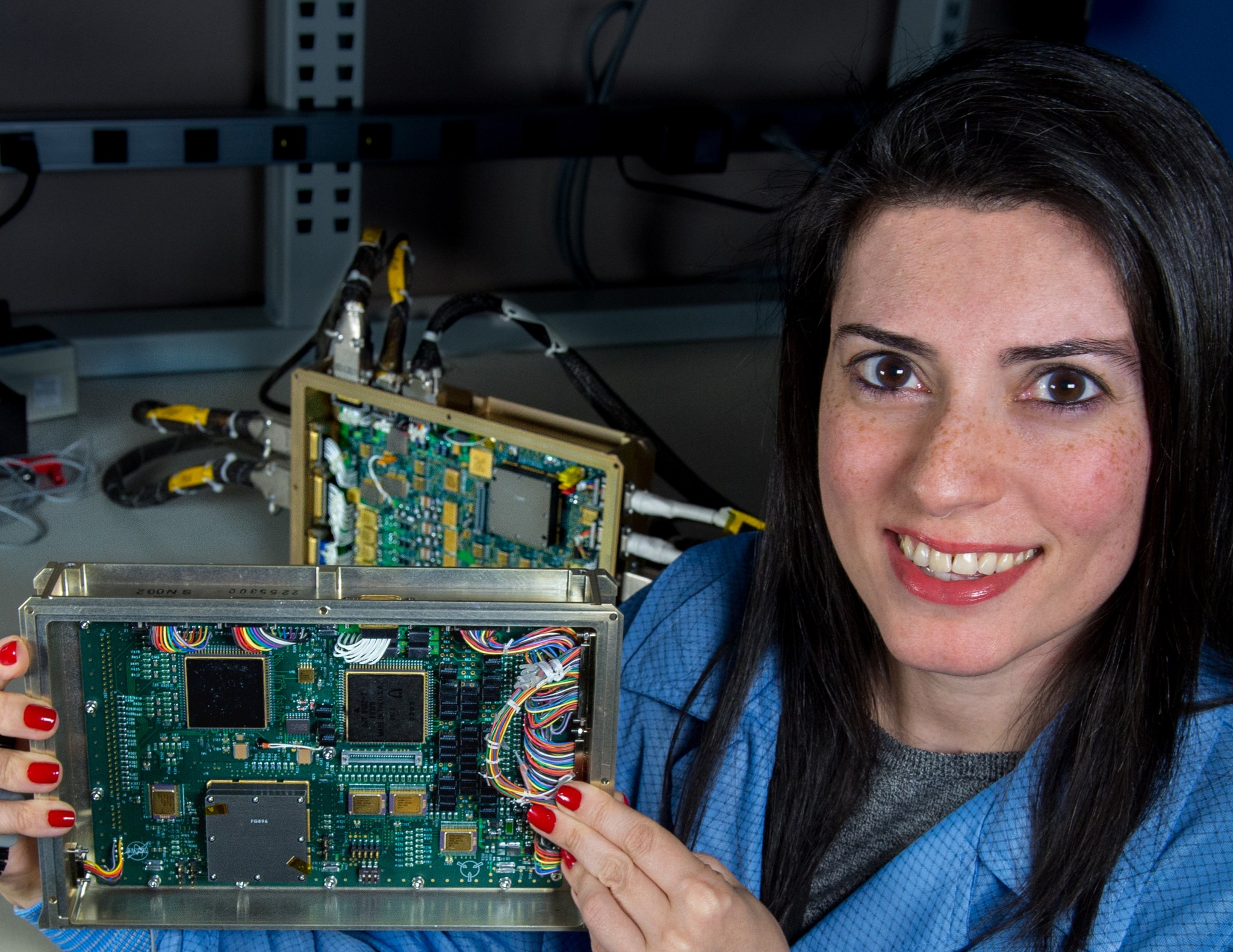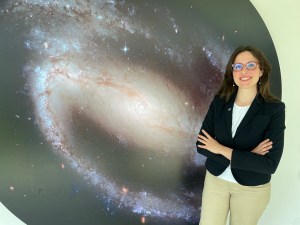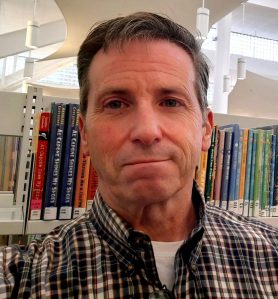Systems Engineer Noosha Haghani Prepped PACE for Space
Throughout the life cycles of missions, Goddard engineer Noosha Haghani has championed problem-solving and decision-making to get to flight-ready projects.
Name: Noosha Haghani
Title: Plankton Aerosol Clouds and Ecosystem (PACE) Deputy Mission Systems Engineer
Formal Job Classification: Electrical engineer
Organization: Engineering and Technology Directorate, Mission Systems Engineering Branch (Code 599)
What do you do and what is most interesting about your role here at Goddard?
As the PACE deputy mission systems engineer, we solve problems every day, all day long. An advantage I have is that I have been on this project from the beginning.
Why did you become an engineer? What is your educational background?
I was always very good at math and science. Both of my parents are engineers. I loved building with Legos and solving puzzles. Becoming an engineer was a natural progression for me.
I have a BS in electrical engineering and a master’s in reliability engineering from the University of Maryland, College Park. I had completed all my course work for my Ph.D. as well but never finished due to family obligations.
How did you come to Goddard?
As a freshman in college, I interned at Goddard. After graduation, I worked in industry for a few years. In 2002, I returned to Goddard because I realized that what we do at Goddard is so much more unique and exciting to me.
My mother also works at Goddard as a software engineer, so I am a second-generation Goddard employee. Early on in my career, my mother and I met for lunch occasionally. Now I am just too busy to even schedule lunch.
Describe the advantages you have in understanding a system which you have worked on from the original design through build and testing?
I came to the PACE project as the architect of an avionics system called MUSTANG, a set of hardware electronics that performs the function of the avionics of the mission including command and data handling, power, attitude control, and more. As the MUSTANG lead, I proposed an architecture for the PACE spacecraft which the PACE manager accepted, so MUSTANG is the core architecture for the PACE spacecraft. I led the team in building the initial hardware and then moved into my current systems engineering role.
Knowing the history of a project is an advantage in that it teaches me how the system works. Understanding the rationale of the decision making we made over the years helps me to better appreciate why we built the system way we did.
How would you describe your problem-solving techniques?
A problem always manifests as some incorrect reading or some failure in a test, which I refer to as evidence of the problem. Problem solving is basically looking at the evidence and figuring out what is causing the problem. You go through certain paths to determine if your theory matches the evidence. It requires a certain level of understanding of the system we have built. There are many components to the observatory including hardware and software that could be implicated. We compartmentalize the problem and try to figure out the root cause systematically. Sometimes we must do more testing to get the problem to recreate itself and provide more evidence.
As a team lead, how do you create and assign an investigation plan?
As a leader, I divide up the responsibilities of the troubleshooting investigation. We are a very large team. Each individual has different roles and responsibilities. I am the second-highest ranking technical authority for the mission, so I can be leading several groups of people on any given day, depending on the issue.
The evidence presented to us for the problem will usually implicate a few subsystems. We pull in the leads for these subsystems and associated personnel and we discuss the problem. We brainstorm. We decide on investigation and mitigation strategies. We then ask the Integration and Test team to help carry out our investigation plan.
As a systems engineer, how do you lead individuals who do not report to you or through your chain of command?
I am responsible for the technical integrity of the mission. As a systems engineer, these individuals do not work for me. They themselves answer to a line manager who is not in my chain of command. I lead them through influencing them.
I use leadership personality and mutual respect to guide the team and convince them that the method we have chosen to solve the problem is the best method. Because I have a long history with the project, and was with this system from the drawing board, I generally understand how the system works. This helps me guide the team to finding the root cause of any problem.
How do you lead your team to reach consensus?
Everything is a team effort. We would be no where without the team. I want to give full credit to all the teams.
You must respect members of your team, and each team member must respect you as a leader. I first try to gather and learn as much as possible about the work, what it takes to do the work, understanding the technical aspects of the work and basically understanding the technical requirements of the hardware. I know a little about all the subsystems, but I rely on my subsystem team leads who are the subject matter experts.
The decision on how to build the system falls on the Systems Team. The subject matter experts provide several options and define risks associated with each. We then make a decision based on the best technical solution for the project that falls within the cost/schedule and risk posture.
If my subject matter experts and I do not agree, we go back and forth and work together as a team to come to a consensus on how to proceed. Often we all ask many questions to help guide out path. The team is built on mutual respect and good communication. When we finally reach a decision, almost everyone agrees because of our collaboration, negotiation and sometimes compromise.
What is your favorite saying?
Better is the enemy of good enough. You must balance perfectionism with reality.
How do you balance perfectionism with reality to make a decision?
Goddard has a lot of perfectionists. I am not a perfectionist, but I have high expectations. Goddard has a lot of conservatism, but conservatism alone will not bring a project to fruition.
There is a level of idealism in design that says that you can always improve on a design. Perfection is idealistic. You can analyze something on paper forever. Ultimately, even though I am responsible for the technical aspects only, we still as a mission must maintain cost and schedule. We could improve a design forever but that would take time and money away from other projects. We need to know when we have built something that is good enough, although maybe not perfect.
In the end, something on paper is great, but building and testing hardware is fundamental in order to proceed. Occasionally the decisions we make take some calculated risk. We do not always have all the facts and furthermore we do not always have the time to wait for all the facts. We must at some point make a decision based on the data we have.
Ultimately a team lead has to make a judgement call. The answer is not in doing bare minimum or cutting corners to get the job done, but rather realizing what level of effort is the right amount to move forward.
Why is the ability to make a decision one of your best leadership qualities?
There is a certain level of skill in being able to make a decision. If you do not make a decision, at some point that inability to make a decision becomes a decision. You have lost time and nothing gets built.
My team knows that if they come to me, I will give them a path forward to execute. No one likes to be stuck in limbo, running in circles. A lot of people in a project want direction so that they can go forward and implement that decision. The systems team must be able to make decisions so that the team can end up with a finished, launchable project.
One of my main jobs is to access risk. Is it risky to move on? Or do I need to investigate further? We have a day-by-day risk assessment decision making process which decides whether or not we will move on with the activities of that day.
As an informal mentor, what is the most important advice you give?
Do not give up. Everything will eventually all click together.
What do you like most about your job?
I love problem solving. I thrive in organized chaos. Every day we push forward, complete tasks. Every day is a reward because we are progressing towards our launch date.
Who inspires you?
The team inspires me. They make me want to come to work every day and do a little bit better. My job is very stressful. I work a lot of hours. What motivates me to continue is that there are other people doing the same thing, they are amazing. I respect each of them so much.
What do you do for fun?
I like to go to the gym and I love watching my son play sports. I enjoy travel and I love getting immersed in a city of a different country.
By Elizabeth M. Jarrell
NASA’s Goddard Space Flight Center, Greenbelt, Md.
Conversations With Goddard is a collection of Q&A profiles highlighting the breadth and depth of NASA’s Goddard Space Flight Center’s talented and diverse workforce. The Conversations have been published twice a month on average since May 2011. Read past editions on Goddard’s “Our People” webpage.




